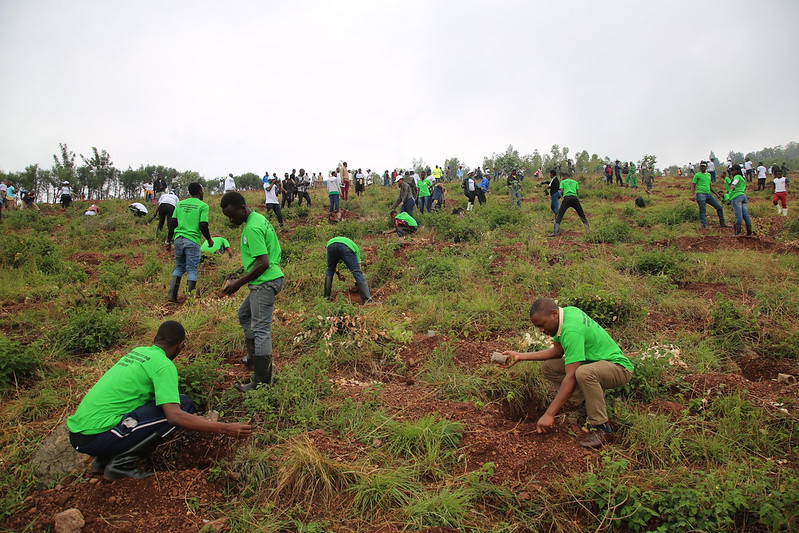Tree planting programmes can be a beneficial tool to combat climate change and rising temperatures as they could help store up CO2 and support surrounding wildlife. But more consideration is gravely needed as to what and where trees should be planted. Otherwise, all tree planting efforts would be moot and pile only more stress onto the environment and its biodiversity.
—
Tree planting has been all the rage lately, so much so that almost everyone – from large multinational corporations like Nestlé and Salesforce, to NGOS like the World Economic Forum, to countries like Australia, China, and the US (including the late Trump Administration, which was known for its climate denialism) – seems to be making commitments to planting millions, billions, or even trillions of trees. We know that trees provide oxygen, store carbon dioxide, and support wildlife. So surely planting more trees must be the way to mitigate climate change, reverse deforestation, and sequester carbon dioxide, right? The simplicity of tree planting to save the environment seems almost too good to be true, and indeed, it might just be.
How Did The Concept of Tree Planting Originate and What We Know About It Now
While some large tree planting programmes like China’s and Australia’s began several decades ago, tree planting gained its massive following thanks to a paper published in 2019 by the Crowther Lab, a research group at Swiss university ETH Zürich. “The global tree restoration potential” found that carbon capture by trees was likely the most effective strategy to limit the rise of carbon dioxide. The Lab generated a model of forest restoration across 900 million hectares globally, representing a 25% increase in forest area, which could store 25% of the current atmospheric carbon pool. This stunning revelation inspired tree planting projects like the World Economic Forum’s, following Thomas Crowther’s suggestion that we need to plant another 1 trillion trees to absorb carbon and that we should ‘stop talking and start planting’.
To a certain extent, Crowther was right. Trees are critically important to combating climate change: nature-based solutions like tree planting can provide over one-third of emission reductions needed to stabilise warming to below 2C. Deforestation should be avoided at all costs, because we know that it increases global warming. But simply saying that planting any type of tree, anywhere in the world will mitigate climate change completely misses the mark.
Instead, we need to be asking two questions.
What Types of Trees are Being Planted?
Not all trees were created equal; the type of tree planted makes a huge difference to whether tree planting is philanthropic or pointless. The most ecologically productive forests are the oldest and most diverse: native forests are 40 times better than tree plantations at storing carbon. So natural forest restoration is the most effective and cheapest option for storing carbon, rather than planting new trees. In fact, planting vast monocultures of trees – pertaining to 45% of Bonn Challenge commitments by countries like China, Brazil, Indonesia, as well as nearly half of the land pledged for forest restoration – hold little more carbon than the land cleared to plant them. These monocultures – typically non-native, fast-growing Eucalyptus and Acacia – are harvested and cleared for replanting once a decade, which releases carbon back into the atmosphere.
Non-native trees also consume significantly more water than native trees and crowd out native species, threatening biodiversity. For instance, a study conducted in 2018 found that the afforestation program in arid and semiarid northern China led to groundwater decline, creating large ecological and water opportunity costs. Another study in northern China found that where soils were already rich in carbon, adding new trees decreased the density of organic carbon, fixing less carbon into the soil.
You might also like: When Planting Trees Threatens Forests
Where Are The Trees Being Planted?
Besides the species of tree, the location where the tree is being planted is important. Crowther’s map showed high-profile conservation areas like the Serengeti and traditional rangelands used by herders for millennia as suitable for tree planting. This ignores the fact that savanna and grasslands are productive, bio-diverse, and store up to a third of the world’s carbon in its soil; not to mention the neocolonial angle: the Global South’s natural heritage should not be converted into a tree plantation to offset the North’s carbon emissions.
Planting dark-coloured trees to replace light-coloured surfaces like grasslands or deserts – which reflect more solar radiation back into space – can also cause heating on a local level and affect regional rainfall patterns.
What Does This Mean for Reforestation?
The bottom line is that for tree planting to be philanthropic rather than pointless, we must develop guidelines on what types of trees are planted, where they should be planted, and what the opportunity cost of planting these trees are. There is currently a ‘misplaced emphasis’ on the concept of the more the better, when in fact, we need to pay more attention to how they are planted. Most importantly, protecting existing forests and encouraging natural regeneration cannot be substituted by reforestation. As the Kew Gardens recommends, we must first and foremost conserve existing native forests, and one way that has proven successful is through leaving land under indigenous control.
Featured image by: Flickr

















